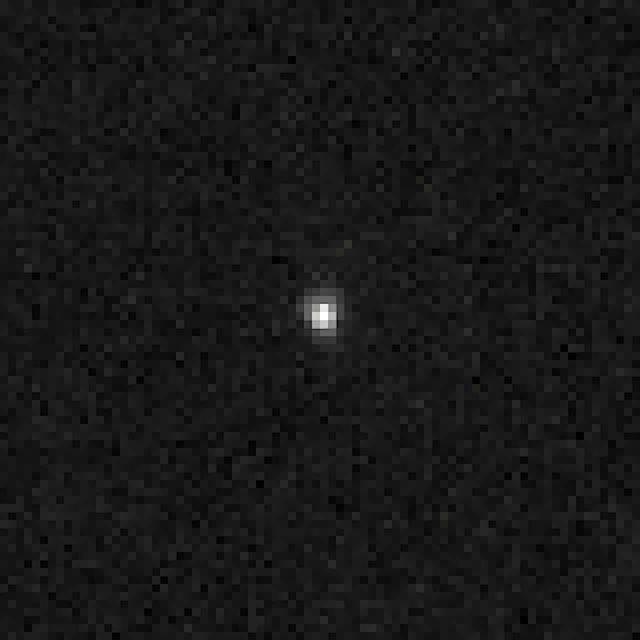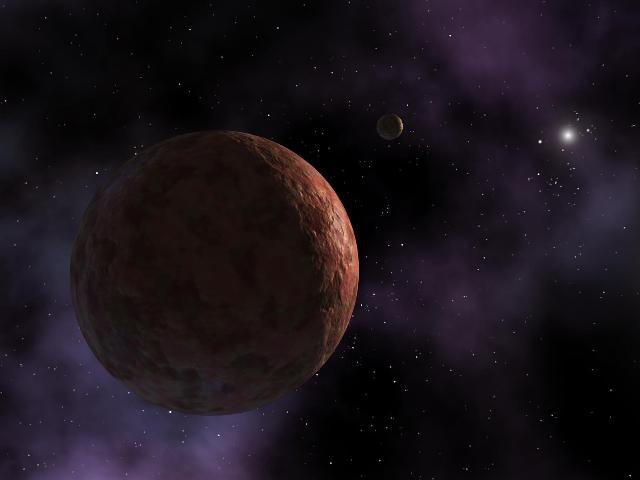A team of researchers from Italy and the United States has proposed two ways in which a hypothetical probe can quickly reach one of the most remote and poorly studied objects in the Solar system. We are talking about Sedna, a trans—Neptunian body that is located beyond the orbit of Pluto. According to engineers, these advanced technologies will be able to deliver the device to Sedna in seven and 10 years.
On the outskirts of our Solar System, far beyond the orbit of Pluto, is Sedna — one of the most mysterious objects known to scientists. This is the first representative of a new class of celestial bodies — Sednoid, a trans— Neptunian object with a very distant orbit (some experts consider Sedna to be a dwarf planet). Such bodies never approach the Sun closer than 50 astronomical units.
Among the large known bodies of the Solar System, Sedna's orbit is the most elongated. The object goes around the Sun in a very elongated trajectory — from 76 to 937 astronomical units. This means that Sedna is practically "disconnected" from the gravitational influence of large planets. Its trajectory is the key to understanding the most remote regions of the Solar System.
Astronomers believe that because of its "extreme" orbit, Sedna may be the first known object in the inner part of the Oort cloud, a giant spherical "shell" of ice blocks that formed 4.5–4.6 billion years ago.
Studying Sedna would help scientists uncover the secrets of the early formation of the Solar system and understand exactly how it came into being. One hypothesis states that Sedna was formed due to gravitational perturbations. In the distant past, the close approaches of the young Sun to neighboring stars could have gravitationally "pushed" some of the planetesimals into distant orbits, which formed the inner Oort cloud and sednoids in particular.

Image of Sedna obtained with the Hubble Space Telescope
Image source: NASA
It takes Sedna more than 11,000 years to complete one revolution around the Sun. It is now approaching the sun and will reach its closest point, perihelion— in 2075-2076. At this stage, the distance between it and the Sun will be reduced to a minimum and will amount to 76.19 astronomical units. This is about three times farther than the distance to Neptune. After that, Sedna will leave again.
Sedna is a very interesting object for scientists, which many experts would like to study. The problem is one thing: how to get to this unique world in a reasonable time using existing technologies? Although traditional chemical engines and even ion accelerators make such a mission possible, the spacecraft using these technologies will fly to Sedna for a very long time — more than one decade.
An international team of engineers led by Elena Ancona from the Polytechnic University of Bari (Italy) has proposed two ways to get to Sedna in seven and 10 years, respectively. In both cases, researchers are considering advanced technologies that can radically change the approach to interplanetary flights.
The first option is a Direct Fusion Drive. This is a conceptual development that has not yet been implemented in practice. The principle of operation is based on the fact that a thermonuclear reaction not only creates thrust, but also generates electricity at the same time. A thermonuclear reaction by itself releases a huge amount of energy that can be converted into an electric current.
The researchers assume that the system will have a capacity of 1.6 megawatts and operate in a continuous traction pulse mode. That is, the main part of the way to Sedna will take place with constant traction. The power should be enough not only for flight, but also for a critically important maneuver — entering orbit around Sedna.
The second option is a solar sail based on the effect of thermal desorption. Unlike classical solar sails, which use the pressure of sunlight, here the movement is provided by molecules evaporating from the surface under the influence of heat, which creates traction. For additional acceleration, the probe will perform a gravitational maneuver near Jupiter, using its powerful gravity as a "slingshot". The main advantage of such a sail is speed and lack of fuel.
The scheme of the direct thermonuclear fusion engine
Image source: Wiki Helper 2135
The comparison showed unexpected results. When using a direct fusion engine, the flight to Sedna of a vehicle weighing a ton will take about 10 years, of which 1.6 years the probe will accelerate. The solar sail will complete the task faster — in just seven years. This can be achieved due to the fact that it can accelerate continuously and does not require a significant amount of fuel.
But there is a caveat: the sail's power is most likely not enough to decelerate and enter orbit around Sedna. The mission will only be limited to flying past it. But a ship with a direct fusion engine will be able to enter orbit and study the cosmic body in detail.
The difference between these options is the choice between speed and depth of research. The span will provide minimal data. A full-fledged orbital mission will open up the possibility of surface mapping, composition analysis, and possibly even satellite detection.
Both approaches are still a concept, but they have different potential. The direct fusion engine requires a breakthrough in the field of containment and reaction control. Despite the beautiful calculations, there is still no certainty that such a system can be built.
A solar sail based on the thermal desorption effect looks more realistic. This technology is being developed on the basis of existing solar sail technologies, but requires precise trajectory calculations and the creation of new materials that are resistant to high temperatures and can effectively release substances for thrust.
In the coming years, the engineers intend to work out the mission concept in detail, assess the risks and necessary resources. The launch of the spacecraft is possible only in a narrow "window" when Sedna will be as close to the Sun as possible. With a positive decision, the project can become a key stage in exploring the far reaches of our Solar system.
For more information about the technology, see the article published on the website of the electronic archive of scientific articles at Cornell University.
Igor Baydov

